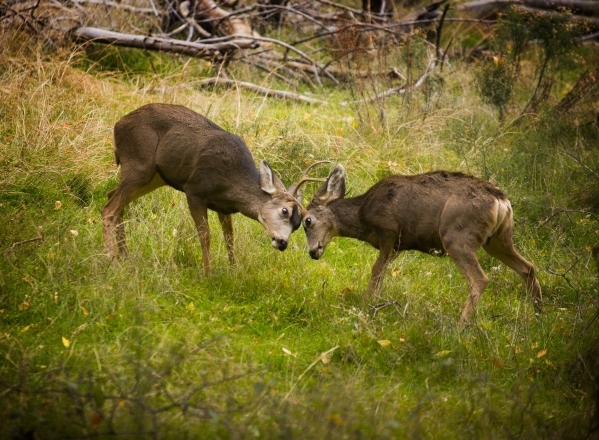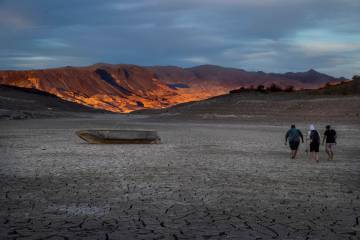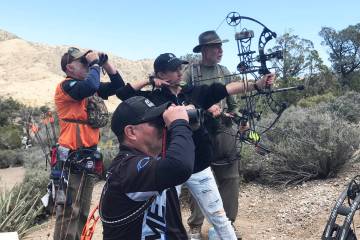Nice weather working against deer hunters
The daytime high in downtown Ely this afternoon should be 76 degrees, according to the National Weather Service. Farther north, that number is expected to be a little lower but not by much. The high temperature in Elko should reach 71 degrees, and nighttime temperatures will hover in the vicinity of 40 degrees in both places.
With the exception of a minor drop over the weekend, these 70 degree temperatures are expected to continue well into next week. While such temperatures may seem rather inviting to those of us who have been enduring triple-digit temperatures, they could make things difficult for Nevada's deer hunters when the season opens Monday.
During the midseason deer hunt in 2014, I was hunting in central Nevada. Each day the deer were already moving when the sun came up, and probably had been long before that. In small groups that included bucks and does, the deer moved steadily south. It was chilly but not cold. One might describe it as T-shirt weather.
As the sun rose behind the mountains to the east, its rays began to work their way from the west side of the valley toward the slope on which I was hunting. As it did so, the temperature grew steadily warmer. Then, as the sun's rays reached my side of the valley, all deer movement suddenly stopped. It was as if someone flipped a switch, but this wasn't the first time I had seen this.
When temperatures are cold enough for you to wear a coat and perhaps a knit cap, deer will continue to move until late in the morning before they bed down. However, when it is warm, they will bed down early.
Such was the case in 2014, when they bedded down about an hour after legal shooting time. Thus the window of opportunity was small, and such most likely will be the case this season. At least until temperatures drop.
One of the keys to filling your tag in warm weather is getting out in the field before sunrise. I know, that reads like a cliche, but it is accurate. By in the field, I mean in a place away from your truck or four-wheeler where you can relax and use your binoculars to scan the country for your quarry as it becomes light.
Being in place early will increase your odds of seeing and then tagging your buck. You may find a deer by driving the roads, but your odds improve tremendously when you move away from the road and the comfort of a vehicle seat.
If there is snow on the ground, deer will often bed in the sun where they can soak up its warmth, but when it's warm, bucks like to bed down in the shade. Think of it this way. If you are looking for shade, they probably are, too.
Bucks also will look for a place where a breeze can help keep flying insects at bay and where they can keep an eye out for predators, including you. They tend to choose places where they can reach escape cover in a bound or two, usually someplace with an edge.
Places to look include the base of a rocky outcrop, a mahogany stand at the end of a finger ridge, or a lone bush in the middle of a bare slope adjacent to a deep draw. Don't overlook a small ledge with only a tree or two, especially if there is water nearby. Look for a shape or movement that doesn't seem to fit. You may see an ear flicker or a flash of light caused by the reflection of sunlight off an antler or a deer's back.
Be prepared to dig in and wait if necessary, but few things are as exciting as stocking a buck in his bed should you choose that option.
If you spot a buck that you wouldn't mind waiting on, keep in mind that a bedded deer will get up periodically during the day to stretch and nibble on a snack before laying back down. If you are patient, your buck may present an unexpected shot. A friend of mine once waited out a buck for several hours while hunting in the Rubies. Each time the sunlight reached where the buck was laying in the shade, it got up and moved back into the shade.
Eventually the buck stepped into the clear and ended up in the freezer cut and wrapped.
Freelance writer Doug Nielsen is a conservation educator for the Nevada Department of Wildlife. His "In the Outdoors" column, published Thursday in the Las Vegas Review-Journal, is not affiliated with or endorsed by the NDOW. Any opinions he states in his column are his own. He can be reached at intheoutdoorslv@gmail.com.






















